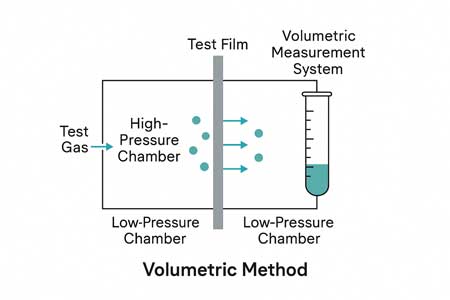

DIN 53380-1:2000-07 is a German standard that specifies a volumetric method for determining the gas transmission rate (GTR) of plastic films. This method is essential for evaluating the barrier properties of packaging materials, particularly in applications where gas permeability is a critical factor.
Key Features of DIN 53380-1
1. Volumetric Measurement Method
The standard employs a volumetric technique to measure the amount of gas that permeates through a plastic film over time. This involves monitoring the volume of gas that passes through the film under controlled conditions, providing a direct assessment of its permeability.
2. Applicability
DIN 53380-1 is applicable to plastic films and is designed to assess their permeability to various gases. The method is versatile and can be adapted to test different gases, making it suitable for a wide range of materials and applications.
3. Test Conditions
The standard outlines specific conditions under which the tests should be conducted, including temperature, humidity, and pressure parameters. Adhering to these conditions ensures the accuracy and reproducibility of the results.
4. Result Expression
The gas transmission rate is typically expressed in units such as cm³/(m²·d·bar), indicating the volume of gas that permeates through a square meter of film per day under a specified pressure difference. This standardized expression facilitates comparison between different materials and test results.
5. Complementary Standards
DIN 53380-1 is part of a series of standards addressing gas permeability in plastics. Other parts of the series include DIN 53380-2 which: Focuses on the manometric method for determining gas transmission rates.
These complementary standards provide alternative methods for evaluating gas permeability, allowing for flexibility depending on the specific requirements of the material or application.
 The volumetric method for determining the gas transmission rate (GTR) measures how much gas passes through a sample material (typically a plastic film) over time under controlled conditions. This is a common technique in standards like DIN 53380-1 and is used to evaluate barrier properties of packaging films.
The volumetric method for determining the gas transmission rate (GTR) measures how much gas passes through a sample material (typically a plastic film) over time under controlled conditions. This is a common technique in standards like DIN 53380-1 and is used to evaluate barrier properties of packaging films.
What Is Measured?
Basic Principle of the Volumetric Method
Test Setup
The test uses a two-chamber system separated by the test film:
1. High-pressure side (donor side):
2. Low-pressure side (receiving side):
Test Procedure
Formula

Units are usually:
cm³/(m²·day·bar)
Advantages of the Volumetric Method
Limitations